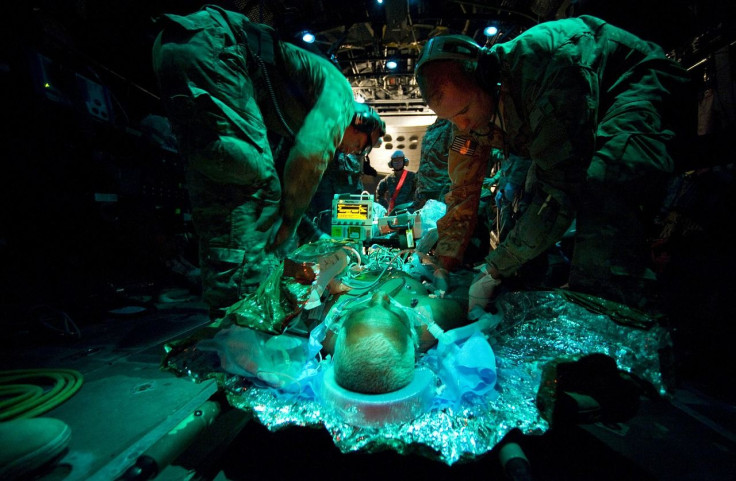Artificial Blood Powder Can Keep People Alive In Emergencies

Fake blood could soon be used for more than just a costume on Halloween — researchers are getting closer to creating artificial blood that emergency medical staffers can carry for emergencies.
A report on CBS News explains that an artificial red blood cell can pick up oxygen in the lungs and then distribute it to other organs and tissue throughout the body, and can be freeze-dried to make it easier for combat medics and paramedics to carry it around. Senior researcher Dr. Allan Doctor, a critical care specialist at Washington University School of Medicine in St. Louis, told CBS News that the dried blood is a “powder that looks like paprika, basically” that can be held in an IV bag and, when needed, mixed with water. “And it's ready to inject right then and there.”
Read: How A Blood Transfusion Changes You
While scientists have been working toward artificial blood for years, they have only recently figured out how to get the artificial cells to disperse the oxygen it picked up. The artificial blood, which could be used on someone with any blood type, could prove lifesaving in trauma situations both at home and in combat — according to CBS News, 70 percent of battlefield deaths are related to blood loss and more than 20,000 people in the U.S. die each year of blood loss before they can be treated for their injury. “Besides emergency settings, the artificial blood also could be used to help keep donated organs alive en route to a recipient, and supplement a hospital’s regular blood supplies during complex surgeries such as open-heart bypass.”
Blood is a constant need in the U.S. According to the American Red Cross, someone in the country needs blood every two seconds. That can be someone who has suffered a trauma, but also includes people who suffer from blood disorders that require frequent blood transfusions, such as sickle cell disease, and cancer patients who need blood during chemotherapy treatments. However, the need for emergency blood does not always match the supply.
The artificial blood uses purified human hemoglobin, the protein in red blood cells that carries the oxygen, to produce a red blood cell that is about 98 percent smaller than a naturally occurring cell. There are other types of manufactured blood in the works too — scientists in Singapore have modified mouse skin cells to create different types of blood cells that could last for months when transfused into the mice, according to a study in Nature Communications, and they hope to replicate that process in humans.
Doctor told CBS News that the hemoglobin-derived artificial blood his team created does not last as long as natural blood, which can circulate in the body for a few months. “This cell right now, we project circulation for about a third of a day to half a day. … We may be able to manipulate that and get it up to a couple of days, but I seriously doubt we'll be able to get to the circulation time of a normal red blood cell.” Another shortcoming is that real blood has other functions: its illness-fighting white blood cells regulate the body’s immune response and its platelets are involved in clotting. But the artificial blood does not do those things — it only delivers oxygen.
And it could be several years before it’s ready to use because it needs to be tested in smaller animals and then in humans.



























